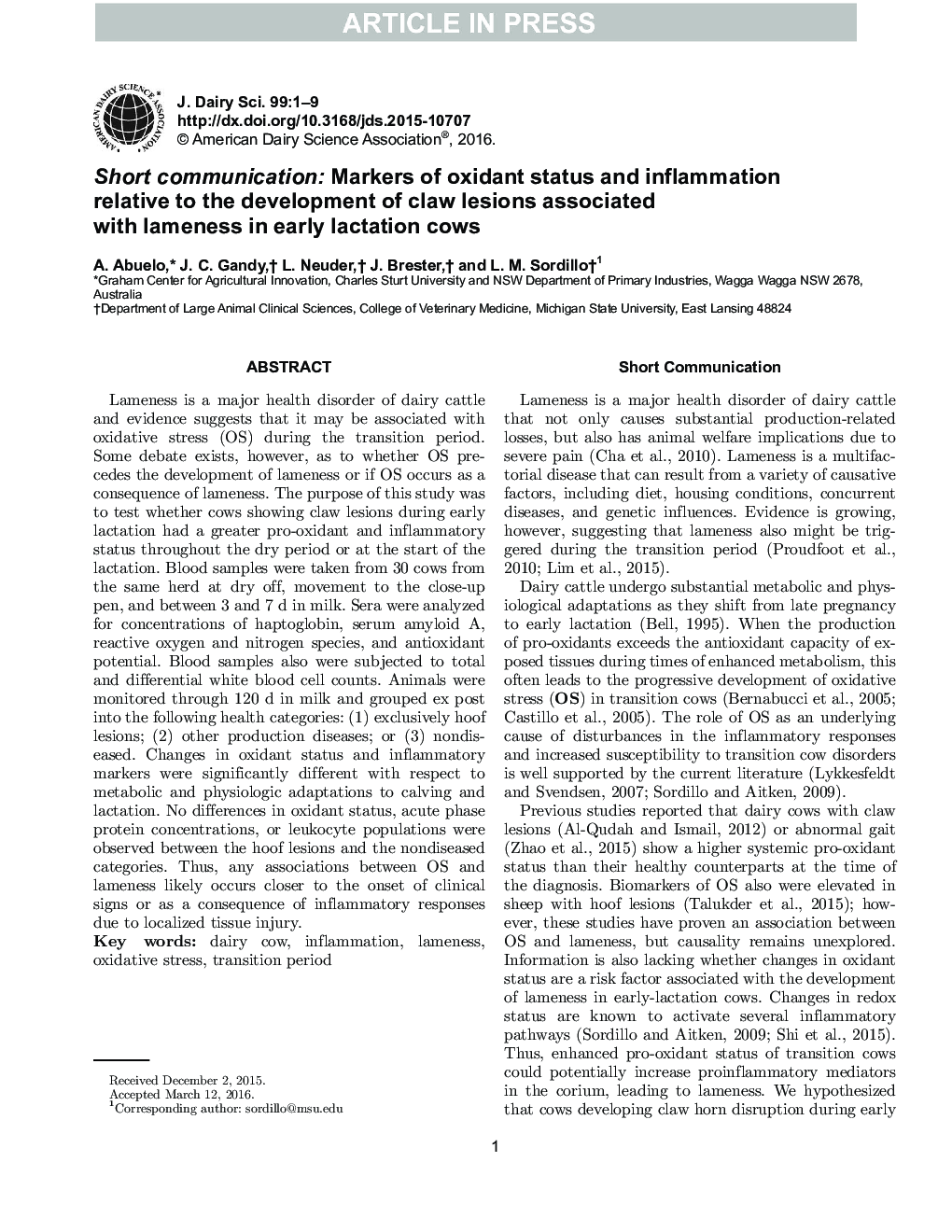| Article ID | Journal | Published Year | Pages | File Type |
|---|---|---|---|---|
| 10973661 | Journal of Dairy Science | 2016 | 9 Pages |
Abstract
Lameness is a major health disorder of dairy cattle and evidence suggests that it may be associated with oxidative stress (OS) during the transition period. Some debate exists, however, as to whether OS precedes the development of lameness or if OS occurs as a consequence of lameness. The purpose of this study was to test whether cows showing claw lesions during early lactation had a greater pro-oxidant and inflammatory status throughout the dry period or at the start of the lactation. Blood samples were taken from 30 cows from the same herd at dry off, movement to the close-up pen, and between 3 and 7 d in milk. Sera were analyzed for concentrations of haptoglobin, serum amyloid A, reactive oxygen and nitrogen species, and antioxidant potential. Blood samples also were subjected to total and differential white blood cell counts. Animals were monitored through 120 d in milk and grouped ex post into the following health categories: (1) exclusively hoof lesions; (2) other production diseases; or (3) nondiseased. Changes in oxidant status and inflammatory markers were significantly different with respect to metabolic and physiologic adaptations to calving and lactation. No differences in oxidant status, acute phase protein concentrations, or leukocyte populations were observed between the hoof lesions and the nondiseased categories. Thus, any associations between OS and lameness likely occurs closer to the onset of clinical signs or as a consequence of inflammatory responses due to localized tissue injury.
Related Topics
Life Sciences
Agricultural and Biological Sciences
Animal Science and Zoology
Authors
A. Abuelo, J.C. Gandy, L. Neuder, J. Brester, L.M. Sordillo,
